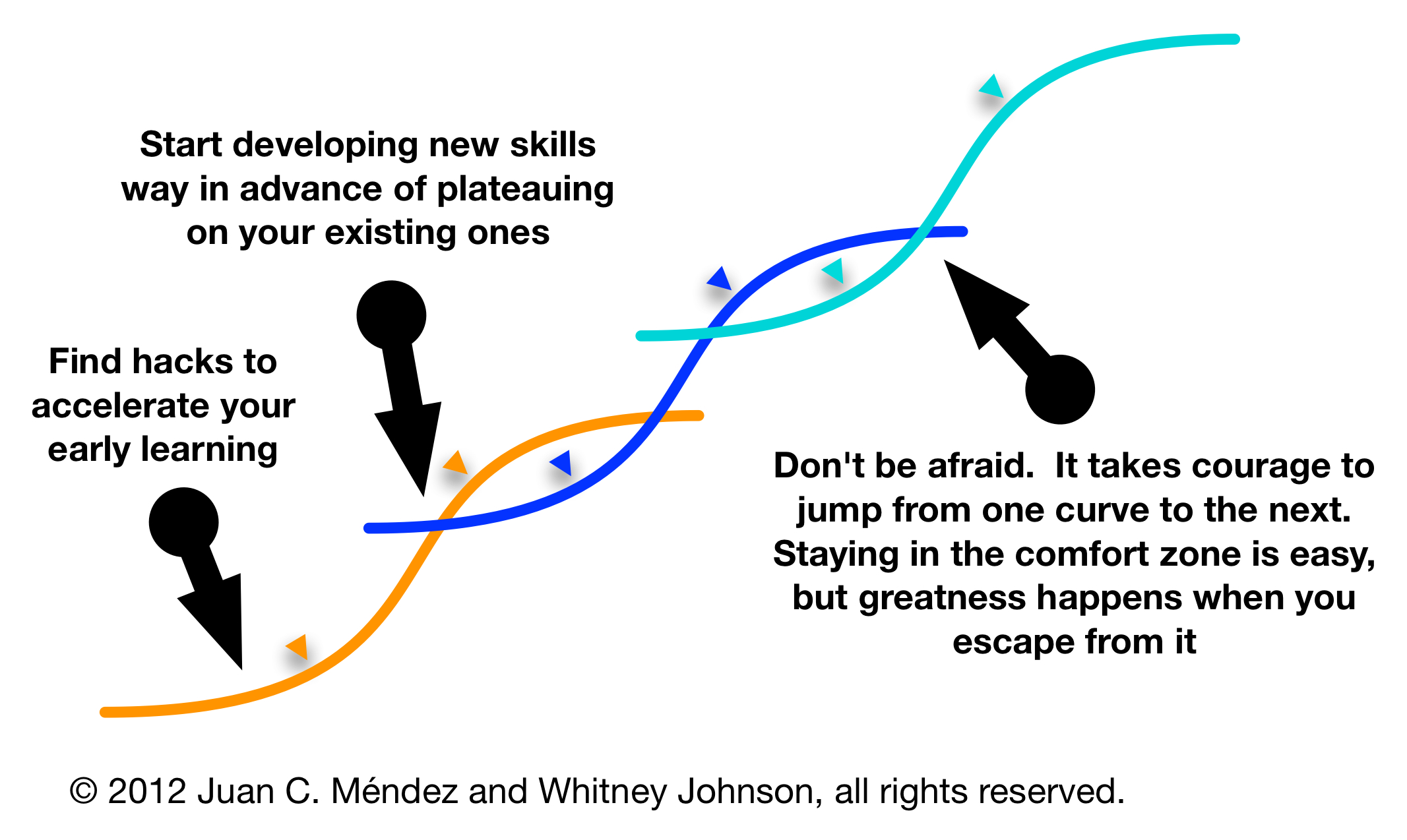8.7. Balance¶
When we talk about balancing a game, we are talking about matching the challenges in a game to the player. And that player’s skill with any technique tends to grow in an S-Curve. So we should simply make the difficulty of the game start low, increase slowly for a while, then ramp up fast and then slowly level out, right?
No. While that is the correct path of challenge difficulty for any one skill, a player is likely going to start get bored using that one skill once they have maxed it out. Instead we have to figure out how to balance our game to force transition from a beginning level skill to a new one.

As a player masters one skill, we must find ways to encourage them to start developing new ones. (From Harvard Business Review)
Extra Credits describes this as the need to wean players off of First Order Optimal strategies:
Thus instead of the straight growth in player skill we saw before, when game design is done right, we are looking to accommodate periodic drops or slow downs in skill development as players transition to a new skill that then enables them to do new, greater things. A flow graph for this more realistic situation should look more like this:

Flow Channel With Skill Development (from “The Art of Game Design” book by Jesse Schell)
Although the player is getting better over time, that growth happens in fits and starts. Sometimes their perceived skill even goes down as they experiment with a new skill. The goal is to allow that process while keeping them challenged and encouraging them to experiment with new skills.
